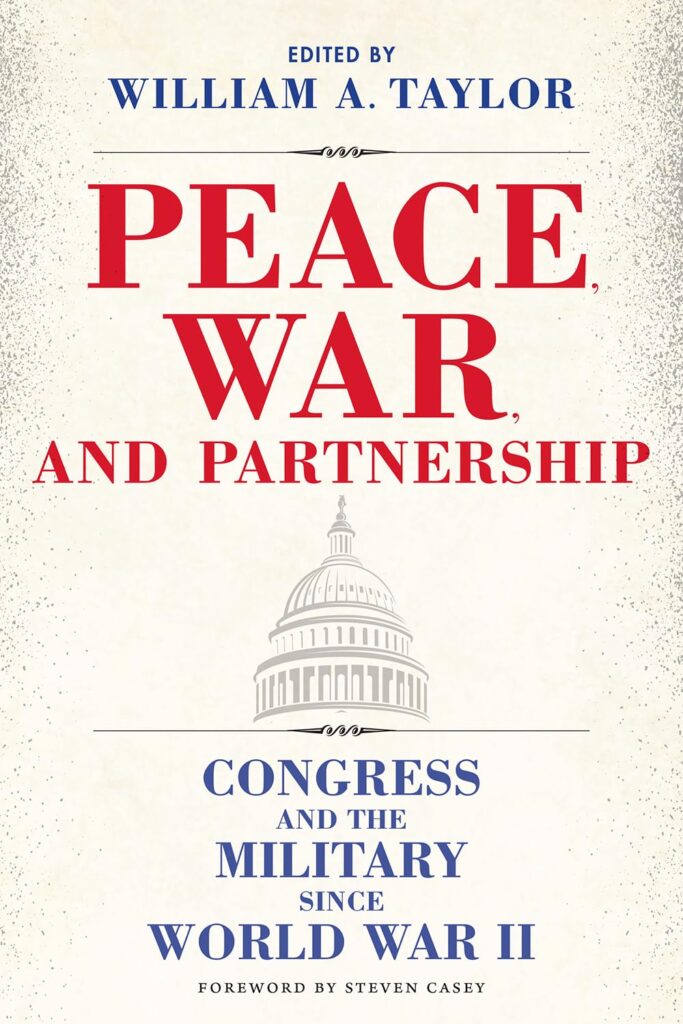Edited by William A. Taylor. College Station: Texas, A&M University Press, 2023.
ISBN 978-1-64843-137-1. Notes. Appendix. Index.
Pp. xi, 257. $55.00.
This collection of essays follows the continually evolving relationship between the U.S. Congress and the American military since the conclusion of World War II. Arranged chronologically, these writings provide a clear and accessible narrative of the ebb and flow of Congressional involvement with the national defense establishment and the corresponding relations with the executive branch.
While the President is the commander-in-chief of the armed forces, Congress alone retains the right to declare a state of war. Congressional oversight of the military equally remains a fundamental principle of American constitutionalism. Just as reaction to the course of global events since 1945 has stretched the power of American presidents to their constitutional limits, so has the mission of Congressional oversight and involvement been expanded, not merely as the watchdog of the budget, but increasingly on issues of national security and the national interest.
President Harry S. Truman’s decision in 1950 to dispatch American troops to defend South Korea from attack by the Communist North set a precedent that has been followed by both Democratic and Republican presidential administrations in a series of armed interventions around the globe since the onset of the Cold War. None of these efforts have had the sanction of formal declarations of war, but they nevertheless required the acquiescence and support of Congress to supply the resources vital for the implementation of such executive policy decisions.
Correspondingly, the Foreign Relations/Foreign Affairs and the Armed Services Committees of the Senate and the House of Representatives have assumed greater power and influence in matters of defense and national priorities. While the concerns of Congress regarding the armed forces is most evident in the defense budget process, it has increasingly involved itself directly in determining the policies, structure, and internal workings of the military itself, particularly since the Vietnam experience. (the reviewer recalls a drill instructor at Fort Dix complaining of civilian interference in Army training methods).
These writings by academics and military researchers follow Congressional initiatives from the initial break with traditional American foreign policy, to the vote for NATO, the fixing of terms for the Joint Chiefs of Staff Chairmen, the post-Vietnam War Powers Resolution limiting presidential options for foreign interventions, the Goldwater-Nichols Act realigning command structures for joint operations, the revisions in the draft law, and more. In its legislative functions, Congress has implemented what is considered the general will of the American electorate. Of the latter measures, the War Powers Resolution is perhaps the most significant assertion of Congressional prerogative and power over these matters, redefining executive authority and limiting the President’s power to engage the U.S. military in overseas operations without Congressional approval. As the editor of these essays notes, Congress, the military establishment, and the White House remain in a dynamic relationship, all with the aim of maintaining America’s power, prestige, and national security.
Martin Comack
Somerville, Massachusetts
